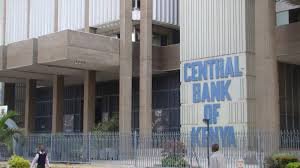
Debt in Emerging Markets and Developing Economies (EMDE) debt rose by 8.7 percentage points in 2020, according to the International Monetary Fund (IMF).
Global debt surged to a record 258 trillion dollars in the first quarter of 2020 as economies around the world shut down to contain the coronavirus pandemic.
Emerging-market countries owed more than 8.4 trillion dollars in foreign-currency debt, or about 30 percent of the developing world’s gross domestic product, as of the end of the first quarter of 2020.
Among the factors attributed to the rising debt levels is stimulus packages offered by respective governments.
According to the World Bank, unprecedented stimulus packages that were meant to avoid the worst economic outcomes could end up being a liability for governments. Additional, spending and forgone revenue in emerging markets was 3.4 percent of Gross Domestic Product (GDP) while in advanced economies it stood at 9.3 percent. Further, equity, loans and guarantees in emerging economies stood at 2.5 percent while in advanced economies it rises to 11 percent.
The United States under its former Head of State Donald Trump rolled out a 900 million dollars equivalent to Ksh.98.7 billion stimulus package with Americans receiving an unemployment cheque of 600 dollars or Ksh.65,820.
Under President Joe Biden, there is a 1.9 trillion dollars stimulus package or Ksh.208.4 trillion on the table that will see families receive 1400 dollars (Ksh.153, 580) as part of unemployment benefits.
In Kenya, the government rolled out a Ksh.53.7 billion ($503 million) stimulus package to support businesses that were hit by the coronavirus pandemic.
According to the National Treasury, the economic stimulus package was to provide credit guarantees, loans to small businesses and help prop up tourist facilities.
To ease the burden of borrowing amid a global pandemic and cash crunch, many central banks lowered interest rates to facilitate fair borrowing. The average borrowing rates in emerging markets stood at 5.2 percent in January 2019 but dropped to 4.5 percent in January 2020 and further down to 4.2 percent by April of 2020.
While low interest rates may mitigate the negative effects of high debt levels, world bank projects that rates will eventually rise again on investor turn around.
As a result of pilling debt, WB predicts that emerging markets are at a moderate risk of defaulting on debt.
As is, many low income countries have already defaulted on their debt. Heavily indebted countries low risk of default stands at 11.4 percent, moderate risk at 45.7 percent while high risk stands at 42.9 percent.
To mitigate risk of default, a group of G-20’s initiative to suspend official loan payments totaling to Ksh.548 billion for the 73 poorest nations has helped low income countries avoid default and free up cash for COVID-19 responses.
The Paris Club of international creditors in January accepted a request from Kenya for a debt-servicing suspension from January to the end of June. The suspension freed up Ksh.32.9 billion in potential savings for the six-month period.
Kenya was to channel the cash freed by the initiative to mitigate the health, economic, and social impact of the COVID-19 crisis. Despite the debt suspension, IIF says some 3.7 trillion dollars of emerging market debt would come due through the end of 2020, and is set to rise to 4 trillion dollars in 2021.
World Bank, however, warns that it will be difficult to mitigate debt in emerging markets. This is because the share of non-concessional debt in EMDEs has risen as the importance of non-Paris Club lenders has increased, potentially complicating debt resolution if needed.
Non concessional loans in emerging markets between 2015- 2019 stood at 85.1 percent of government debt contrary to 77.4 percent between 2005- 2009.





